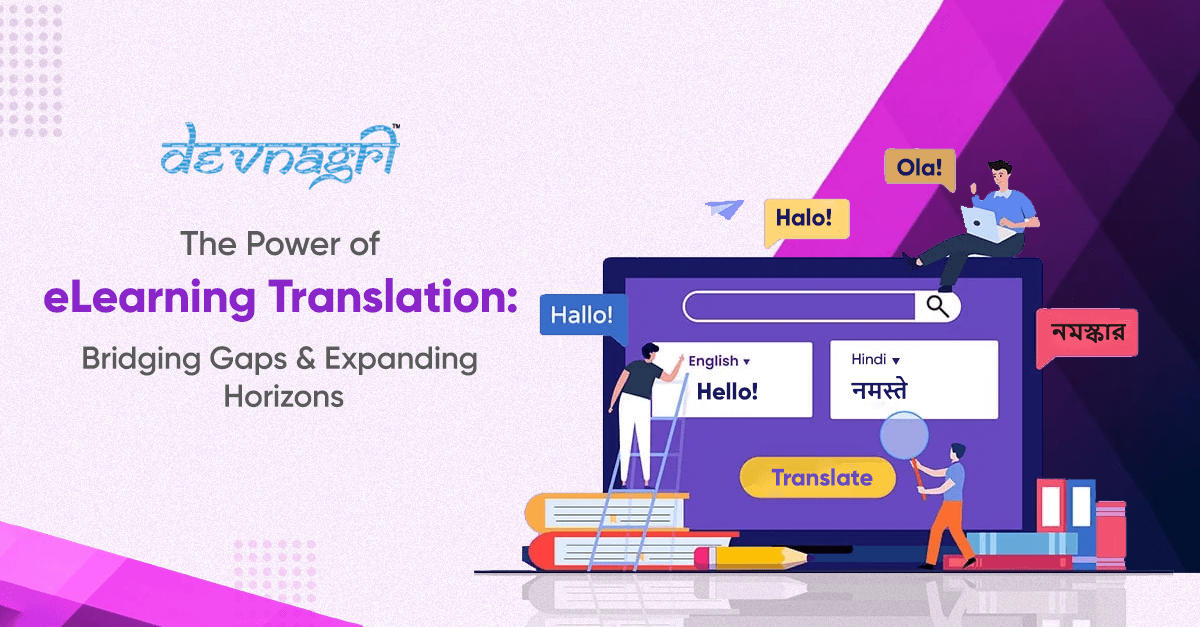
In today’s interconnected world, where information flows seamlessly across borders, the need for effective communication knows no bounds. In the realm of education, this imperative is particularly pronounced, as learning has become increasingly globalized. As a result, the demand for eLearning translation solutions has surged, facilitating access to knowledge and breaking down linguistic barriers like never before.
Also Read: Unlocking Global Audiences with a Website Translator
eLearning translation involves the adaptation of educational content from one language to another, ensuring that learners from diverse linguistic backgrounds can access and engage with the material effectively. This process encompasses not only the translation of text but also the localization of images, videos, and interactive elements to suit the cultural nuances and preferences of the target audience.
Also Read: Enhancing Your Reach and Impact: The Importance of Website Translation
One of the most significant advantages of eLearning translation is its ability to democratize education by making it accessible to learners worldwide. With the proliferation of online learning platforms and the widespread availability of digital resources, individuals no longer need to be proficient in a specific language to access high-quality educational content. Whether it’s a course on advanced mathematics, computer programming, or language acquisition, eLearning translation enables learners to engage with the material in their preferred language, empowering them to pursue their educational goals regardless of linguistic barriers.
Also Read: The Crucial Role of Finance Translation: Bridging Global Markets
Moreover, eLearning translation fosters inclusivity by catering to the needs of diverse learners, including those with limited English proficiency or disabilities. By providing content in multiple languages and formats, such as audio descriptions or subtitles, eLearning platforms can ensure that all learners have equal opportunities to participate and succeed in their educational journey. This inclusive approach not only promotes diversity but also enriches the learning experience by fostering collaboration and cross-cultural exchange among students from different backgrounds.
Also Read: Breaking Language Barriers: The Power of Website Translators
In addition to enhancing accessibility and inclusivity, eLearning translation contributes to the globalization of education, enabling institutions and educators to reach a broader audience and expand their impact on a global scale. By translating their courses and materials into multiple languages, universities, training providers, and corporations can attract international students, employees, and customers, thereby diversifying their user base and increasing their global reach. This globalization of education not only benefits individual learners but also promotes cultural exchange, mutual understanding, and cooperation across borders.
Also Read: Unlocking Global Gaming: The Significance of DOTA Website Translation
Furthermore, eLearning translation plays a crucial role in promoting economic development and bridging the digital divide by providing individuals in underserved regions with access to educational opportunities. In many parts of the world, access to quality education is limited by factors such as language barriers, lack of infrastructure, and socioeconomic disparities. By leveraging eLearning platforms and translation solutions, organizations can overcome these challenges and deliver educational content to remote and marginalized communities, empowering them to acquire new skills, pursue economic opportunities, and improve their quality of life.
Also Read: Navigating the Complex World of Finance Translation
Despite its numerous benefits, eLearning translation also presents unique challenges and considerations that must be addressed to ensure its effectiveness and impact. These include linguistic nuances, cultural sensitivities, technical constraints, and the need for quality assurance to maintain accuracy and consistency across translated materials. Additionally, the scalability and cost-effectiveness of eLearning translation solutions must be carefully evaluated to ensure that they align with the goals and resources of educational institutions and organizations.
Also Read: The use of Website Translation in Banking Industry
In conclusion, eLearning translation is a powerful tool for advancing education, promoting inclusivity, and fostering global collaboration in the digital age. By breaking down linguistic barriers and expanding access to knowledge, eLearning translation empowers individuals and communities to learn, grow, and thrive in an increasingly interconnected world. As technology continues to evolve and educational opportunities become more accessible, the potential for eLearning translation to transform lives and shape the future of education is boundless.





